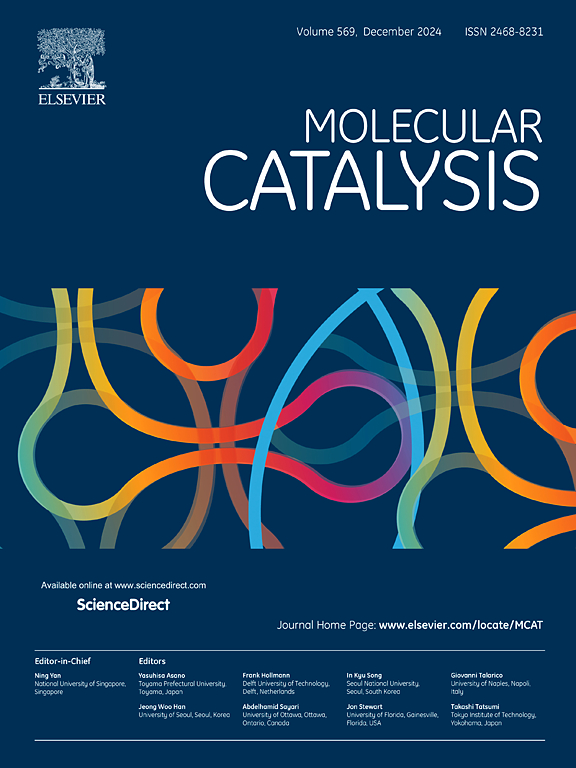吡啶衍生物修饰CuPt金属用于CO2电还原
IF 4.9
2区 化学
Q2 CHEMISTRY, PHYSICAL
引用次数: 0
摘要
通过电催化将二氧化碳转化为高价值化学品是一种很有前途的方法。本研究基于铜基催化剂的设计灵活性和吡啶的质子转移性质,利用金属与硫之间的成键相互作用,制备巯基吡啶(HSPy)修饰的铜基双金属材料用于电催化还原CO2。通过一步法制备的Cu1Pt0.05-SPyx复合材料具有较高的CO2转化法拉第效率,特别是转化为甲醇和甲烷。这种优异的性能主要归功于金属之间以及金属与改性吡啶之间的协同作用。吡啶通过M-S键修饰在复合材料上,能有效促进H转移,并有助于CO2的还原。Pt的引入调整了Cu的电子结构,显著提高了吡啶修饰的程度,提高了稳定性。制备出一种高效稳定的多相电催化材料,具有广阔的应用前景。本文章由计算机程序翻译,如有差异,请以英文原文为准。

Pyridine derivatives modified CuPt metals for CO2 electroreduction
Conversion of CO2 into high-value chemicals through electro-catalysis is a promising approach. This study based on the design flexibility of copper-based catalysts and the proton transfer properties of pyridine, mercaptopyridine (HSPy)-modified copper-based bimetallic materials were prepared for the electrocatalytic reduction of CO2, taking advantage of the bonding interactions between metals and sulfur. The Cu1Pt0.05-SPyx composites, prepared through a one-step method, exhibit high Faradaic efficiency for CO2 conversion, particularly to methanol and methane. This excellent performance is mainly attributed to the synergistic interaction between the metals and between the metal and the modified pyridine. Pyridine modified on the composite through M-S bonds can effectively promote H transfer and assist in the reduction of CO2. The introduction of Pt tunes the electronic structure of Cu and significantly increases the extent of pyridine modification, improves the stability. The result in an efficient and stable heterogeneous electrocatalytic material with promising potential for future applications.
求助全文
通过发布文献求助,成功后即可免费获取论文全文。
去求助
来源期刊

Molecular Catalysis
Chemical Engineering-Process Chemistry and Technology
CiteScore
6.90
自引率
10.90%
发文量
700
审稿时长
40 days
期刊介绍:
Molecular Catalysis publishes full papers that are original, rigorous, and scholarly contributions examining the molecular and atomic aspects of catalytic activation and reaction mechanisms. The fields covered are:
Heterogeneous catalysis including immobilized molecular catalysts
Homogeneous catalysis including organocatalysis, organometallic catalysis and biocatalysis
Photo- and electrochemistry
Theoretical aspects of catalysis analyzed by computational methods
 求助内容:
求助内容: 应助结果提醒方式:
应助结果提醒方式:


